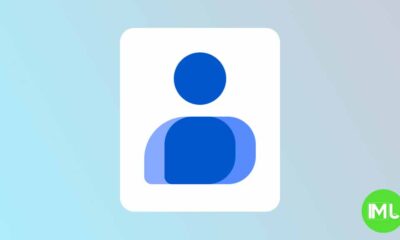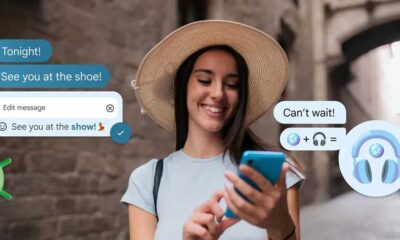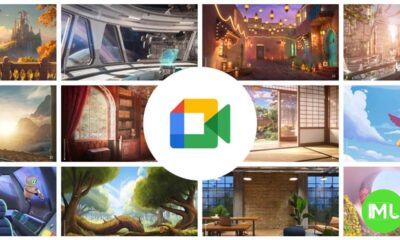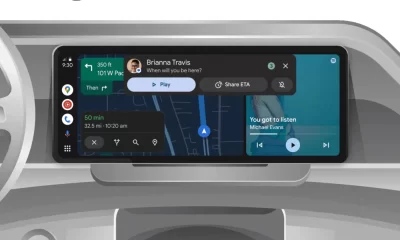New features for Gemini and Chrome enhance security and usability

Google continues to refine and enhance its Gemini and Chrome products, introducing features that simplify user experience while improving security, especially for Android users. Key updates include allowing Gemini to handle calls and messages on locked devices, security measures in Google Chrome to protect your data if your phone is stolen, and design simplifications to make user interaction smoother. Here’s a detailed breakdown of these changes.
Gemini’s New Lock Screen Features: Calls and Texts on Locked Devices
Google is reportedly expanding Gemini’s capabilities to handle phone calls and text messages even when the device is locked, a feature that was previously only available through Google Assistant. This new feature will be part of an upcoming update where users can enable an on/off toggle allowing Gemini to make calls and send texts without unlocking the device. However, to protect sensitive data, Gemini will still ask users to unlock the phone when personal information, such as email content, is involved.
This change is a significant step towards making Gemini more competitive with Google Assistant and aims to offer users added convenience without sacrificing security. The feature will likely enhance hands-free interaction for users, especially in scenarios where immediate response is needed.
User Interface Simplification for Gemini
Alongside functional upgrades, Google is also working on simplifying the user interface of Gemini. One of the notable UI changes is the floating overlay design, which is becoming more minimal. When users input text into the Gemini box, the overlay will expand vertically to display all the content without overwhelming the screen. This more compact design makes Gemini less intrusive while maintaining its functionality.
Another notable change is the shift in how users are prompted to interact with Gemini. The previous command “Type, take, or share a photo to Gemini Advanced” is being replaced with a simpler “Ask Gemini” prompt. This change is aimed at streamlining the experience, making the virtual assistant more accessible and user-friendly across devices.
Google Chrome’s Enhanced Theft Protection: Blocking Password Autofills
Protecting sensitive information on stolen devices has always been a critical issue, and Google is addressing this through a new feature called Identity Check. This feature will require biometric authentication, such as fingerprints or facial recognition, before allowing access to sensitive apps like Google Chrome, which often store passwords and payment details.
The Identity Check feature is designed to prevent thieves from accessing sensitive information even if they know the phone’s screen lock PIN or pattern. Currently, many apps, including Chrome, allow users to enter their phone’s screen lock PIN to authenticate. This makes devices vulnerable if the thief has already seen or figured out the screen lock code. Identity Check aims to close this security loophole.
In practice, this feature will ensure that accessing critical settings, like changing a PIN or accessing Google accounts, will require biometric verification. This enhancement will be part of Android 15 QPR1, expected to roll out in December 2024. Until then, the feature will remain in development, but its importance in preventing data breaches on stolen devices is clear.
Chrome’s Biometric-Only Authentication: Expanding to Password Autofills
In addition to device settings, Google Chrome is preparing to extend biometric authentication to password autofills and other secure actions within the browser. A new method, “GetBiometricAvailabilityStatus,” will determine if biometric authentication is mandatory, available, or unavailable, ensuring that Chrome adapts to the security level of each device. This feature is designed to protect users from having their stored passwords or sensitive information compromised in case of theft.
This security update will be part of Chrome’s integration with Android 15 and will enhance the app’s ability to safeguard sensitive information like payment methods and personal settings. Once enabled, users will need to authenticate via biometrics before accessing these features, providing an extra layer of protection.
Gemini and Google Chat Interface Upgrades: Simplified Navigation and Interaction
Beyond security, Google is also focusing on improving user experience across its platforms. The floating bottom bar in Google Chat, a design element introduced about a year ago, is getting a visual refresh. Previously, the bar used a circle indicator for navigation, but it’s now being updated to a pill-shaped tab, which is more in line with Google’s Material You design language. This change makes the bar more streamlined and easier to use, aligning with Google’s broader design goals for consistency across platforms.
Additionally, the container background is now themed with Dynamic Color, making it stand out more than the older light or dark theme versions. These visual tweaks aim to simplify navigation and improve the overall user experience, while also ensuring that the design fits in seamlessly with other Material 3 interfaces.
Google is also rolling out an enhancement to the Gemini app, where users can interact using the simplified “Ask Gemini” command. This change, alongside the recent redesigns, shows Google’s continued effort to make Gemini more intuitive and user-friendly, without losing the power of its advanced features.
Google Workspace AI and Gemini Integration: Improved Summaries in Google Chat
In another significant development, Google Workspace is introducing a new summarization feature for Gemini, enabling users to quickly catch up on unread conversations. On mobile devices, users can long-press on a thread to generate a summary, while desktop users get a “Summarize” button on hover. This feature will be especially useful for busy professionals looking to quickly assess the content of group conversations and threads.
This new feature is rolling out to Google Workspace customers with paid add-ons, such as Gemini Business, Enterprise, and Education. By offering these AI-driven tools, Google aims to boost productivity and efficiency across its platforms.
Conclusion: A Focus on Security and User Experience
Google’s latest updates for Gemini and Google Chrome focus on improving both security and user experience. From allowing Gemini to handle calls and messages on locked devices to enhancing Chrome’s security features with biometric authentication, these changes are designed to protect users while offering greater convenience. The UI updates and design improvements further simplify interaction, making it easier for users to navigate and use these powerful tools. As these updates roll out with Android 15 and other system changes, Google continues to lead in delivering advanced, user-friendly technology.
Google Meet gets a fresh new look with Material 3 design

Google Meet is getting a big update to its look, thanks to the new Material 3 design. This change brings a cleaner and more modern style to the video calling app, making it easier and more enjoyable to use.
With Material 3, Google Meet now has rounder buttons, softer colors, and better spacing between elements. The main controls, like the microphone, camera, and end call buttons, are now larger and easier to tap. The icons and text are also clearer, which helps users find what they need quickly during a call.
Another improvement is the new “expressive” color system. This feature lets the app’s colors match your device’s wallpaper or theme, giving each user a unique and personalized experience. The changes also make Google Meet more accessible, as the new design is easier to read and use for everyone, including people with vision difficulties.
These updates are rolling out to both web and mobile versions of Google Meet. Google says the new look will help people feel more comfortable and focused during their meetings. Overall, the Material 3 update makes Google Meet not only look better but also work better for all its users.
Android
Easy ways to change Android Auto’s look with light and dark themes

Android Auto is a helpful tool that lets you use your phone’s apps safely while driving. It connects your phone to your car’s screen, making it easier to use maps, music, and calls. One of the features many people like is the ability to change how Android Auto looks by switching between light and dark themes.
How to switch between light and dark themes
Android Auto offers two main themes: light and dark. The light theme uses brighter colors, which can make the screen easier to see during the day. The dark theme uses darker colors, which can be more comfortable for your eyes at night or in low light.
To change the theme, follow these steps:
- Open the Android Auto app on your phone.
- Go to the settings menu.
- Find the “Theme” option.
- Choose between “Light,” “Dark,” or “Set by car” (this lets your car decide the theme based on the time of day or your car’s settings).
Why themes matter
Using the right theme can make driving safer and more comfortable. The light theme is good for bright days, while the dark theme helps reduce glare at night. Having these options means you can pick what works best for you, making Android Auto easier to use in any condition.
In short, Android Auto’s theme options are simple to use and help you drive more safely by making the screen easy to see, no matter the time of day.
Google Drive and Files by Google get fresh updates for easier use

Google is rolling out some helpful updates to two of its popular apps: Google Drive and Files by Google. These changes are designed to make managing your files and watching videos much smoother.
First, Google Drive is getting a new video player. Now, when you upload a video to Drive and open it, you’ll notice a fresh look that matches Google’s latest design style. The controls, like play and pause, are easier to use and look cleaner. This update makes it simpler to watch videos directly in Drive without needing to download them first.
Meanwhile, the Files by Google app is also getting a makeover. The app is adopting Google’s Material 3 design, which means it looks brighter and more modern. The buttons and menus are easier to see and use, making it simpler to find, move, and organize your files. There are also new color options and improved icons, so everything feels more user-friendly.
Both updates show Google’s commitment to making its apps more helpful and enjoyable to use. Whether you’re watching videos in Drive or sorting files on your phone, these changes aim to save you time and make things less complicated. If you use these apps, keep an eye out for these new features—they should arrive soon!
-

 Apps1 year ago
Apps1 year agoGboard Proofread feature will support selected text
-

 News1 year ago
News1 year agoSamsung USA crafting One UI 6.1.1
-

 Apps1 year ago
Apps1 year agoGoogle Contacts app testing new Besties Widget
-

 AI12 months ago
AI12 months agoGoogle Pixel 9 Pro may come with a complimentary one-year Gemini Advanced subscription
-

 Apps12 months ago
Apps12 months agoGoogle working on a new video editing feature for its Photo app
-

 News1 year ago
News1 year agoBreaking: Samsung Galaxy S22 may get Galaxy AI features
-

 Apps12 months ago
Apps12 months agoGoogle Maps lets you report traffic jams and accidents on Apple CarPlay, but not on Android Auto
-

 Apps1 year ago
Apps1 year agoGoogle Messages app will transform MMS chats into RCS










